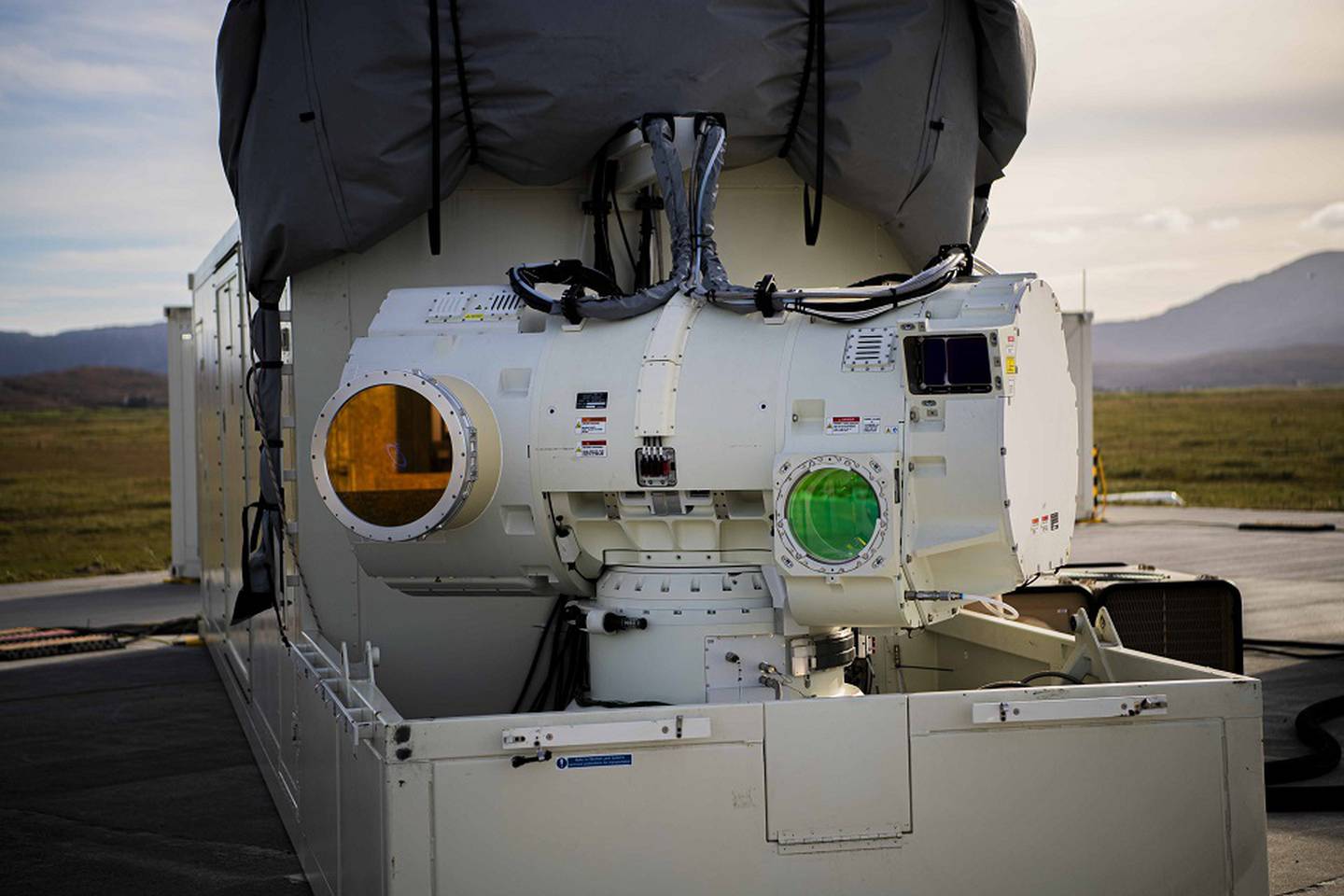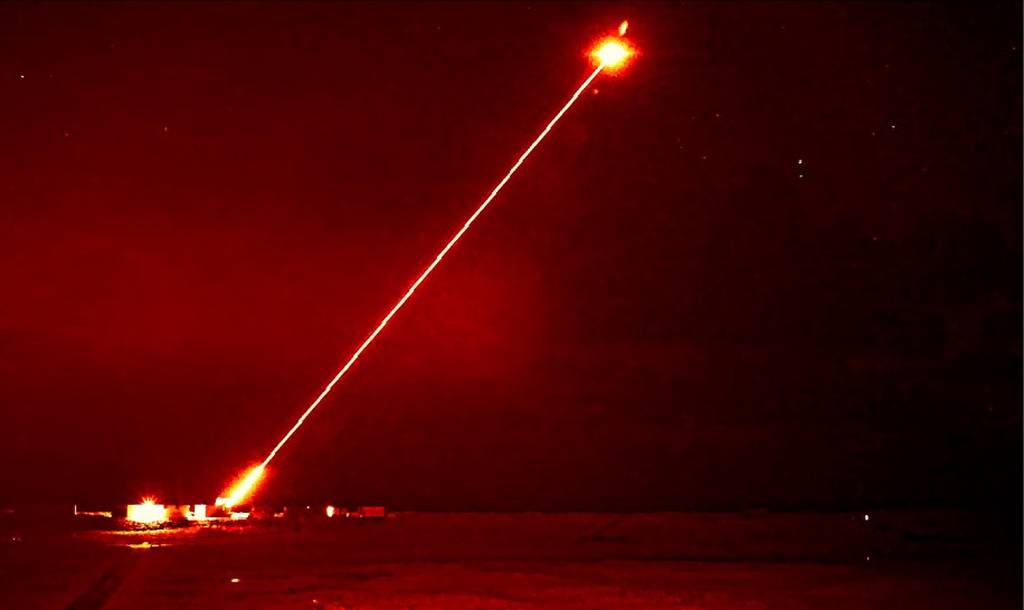LONDON — An industry team has for the first time destroyed an aerial target using a high-power shot with its DragonFire laser, the British Defence Ministry announced Friday.
The trial with the direct-energy weapon is considered a significant milestone toward the deployment of the system, possibly within five years.
Efforts to quickly field such weapons are partly driven by conflicts in Ukraine and near the Red Sea, where expensive air defense missiles are used against cheap but effective drones. The cost of operating the laser is typically less than £10 (U.S. $13) per shot, the ministry noted.
DragonFire is a £30 million technology demonstrator program revealed by the ministry’s Defence Science and Technology Laboratory in 2017.
The industry team — led by missile-maker MBDA, with partners Leonardo UK and QinetiQ — is the key element in a £100 million joint investment with the ministry to develop directed-energy weapons across several programs, including radio-frequency direct-energy weapons.
The MoD said the DragonFire test results are a major step forward in bringing the laser technology into service. The latest milestone follows a series of trials announced by the ministry late last year, including the first static high-power laser firing of a U.K.-made capability as well as the demonstration of the DragonFire system’s ability to track moving air and sea targets with high accuracy.

Shimon Fhina, who directs the ministy’s strategic programs, said the recent trials proved the technology can track and engage high-end targets at range. The government was looking to “accelerate the next phase of the program,” he explained.
A spokesperson with the Defence Science and Technology Laboratory said the “timing of any deployment into U.K. service depends on a number of factors, but could be within the next 5 to 10 years.”
The MoD had already announced its intent to progress directed-energy weapons into a so-called transition phase. This is meant to prepare the military for the eventual fielding of directed-energy weapons by communicating safety measures, implementing training, creating operational concepts and doctrine, and so on, the spokesperson explained.
Doug Barrie, an air warfare analyst at the London-based International Institute for Strategic Studies think tank, said the U.K.’s progress on laser technology is going well.
“There is a lot of work going on in countries like the U.S., Russia and China — most of it classified. But the U.K. has a long history in laser and radio-frequency work, and while we can only dream about the funding levels countries like the U.S. obtain, we [managed to squeeze] quite a lot out of our funding. It’s transitioning the technology to the marketplace that is the problem,” he said.
The British Army and the Royal Navy are each interested in using the technology for air defense. Naval News reported last year the MoD was looking at the retrofit of a 150-kilowatt-class laser directed-energy weapon for new Type 26 frigates beginning in the early 2030s.
The ministry declined to provide Defense news with technical details of the DragonFire, including its range and power levels. Media reports previously put the power level around 50 kilowatts.
“The range of DragonFire is classified, but it is a line-of-sight weapon and can engage with any visible target,” the ministry said.
The latest trial took place at a test range in Hebrides, Scotland. The DragonFire shot down a drone, according to the Defence Science and Technology Laboratory, but no further details about the target were available, including range, altitude and speed.
“This type of cutting-edge weaponry has the potential to revolutionise the battlespace by reducing the reliance on expensive ammunition, while also lowering the risk of collateral damage,” Defence Secretary Grant Shapps said in the ministry’s news release. “Investments with industry partners in advanced technologies like DragonFire are crucial in a highly contested world.”
Andrew Chuter is the United Kingdom correspondent for Defense News.








